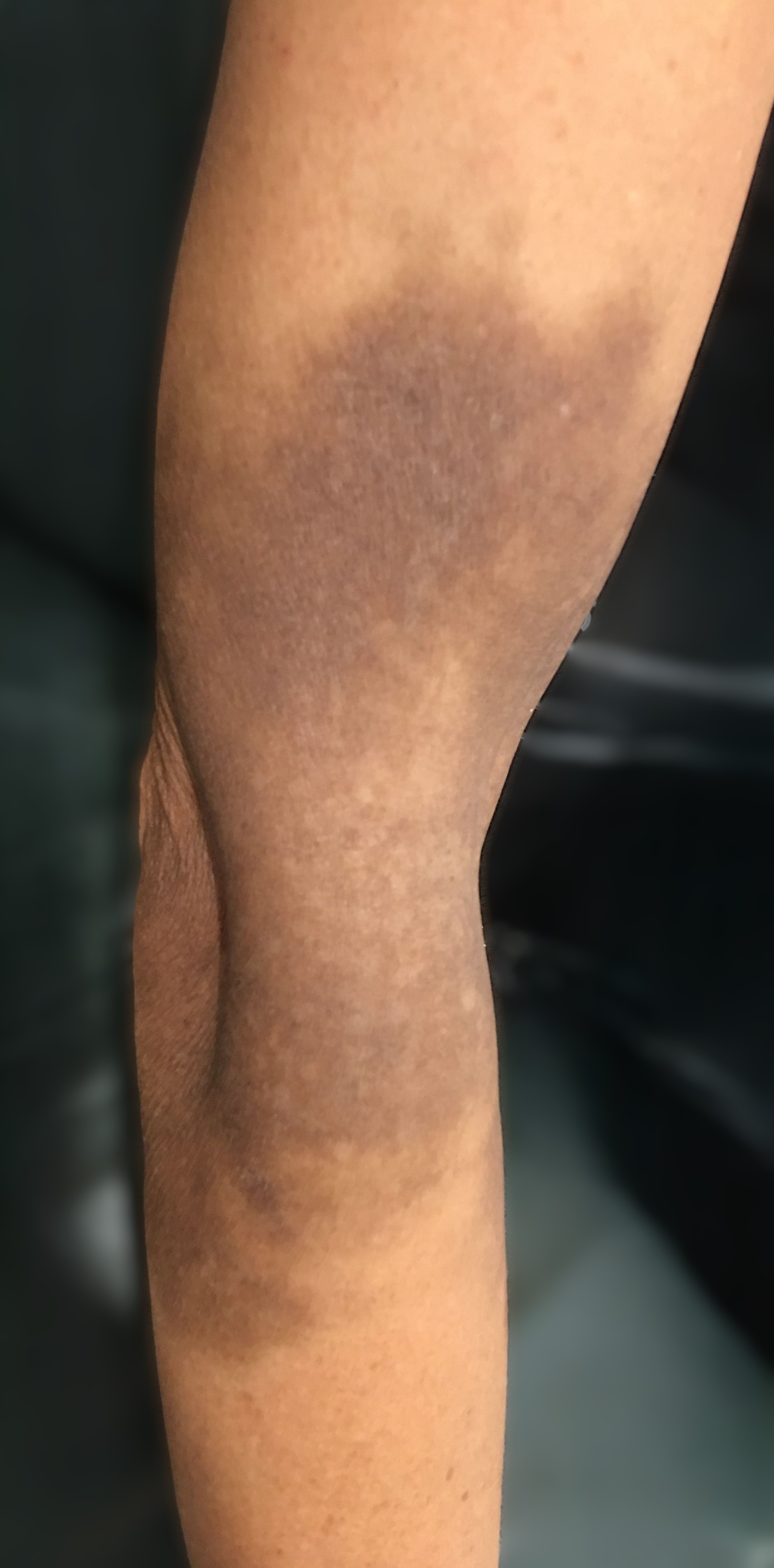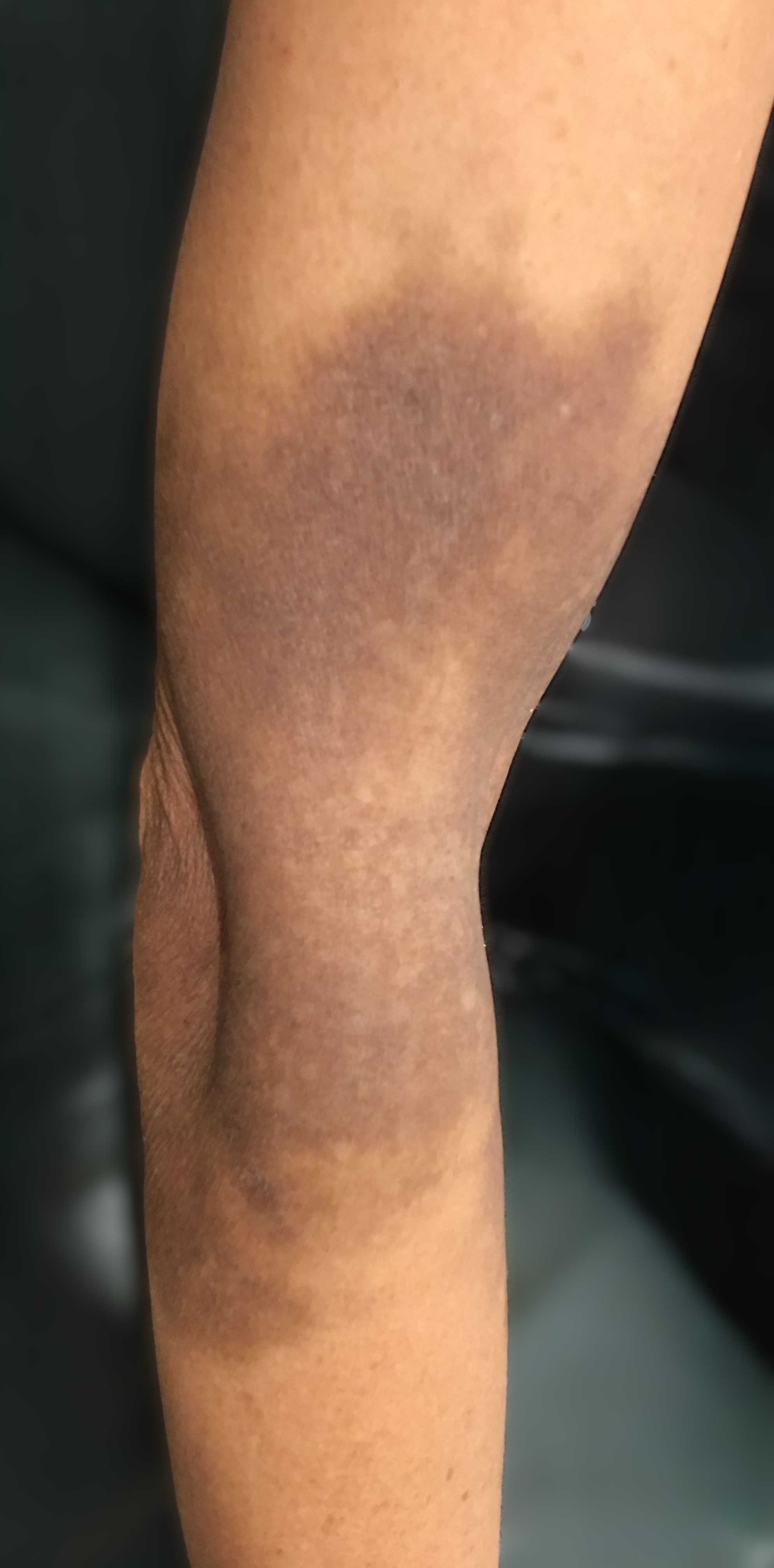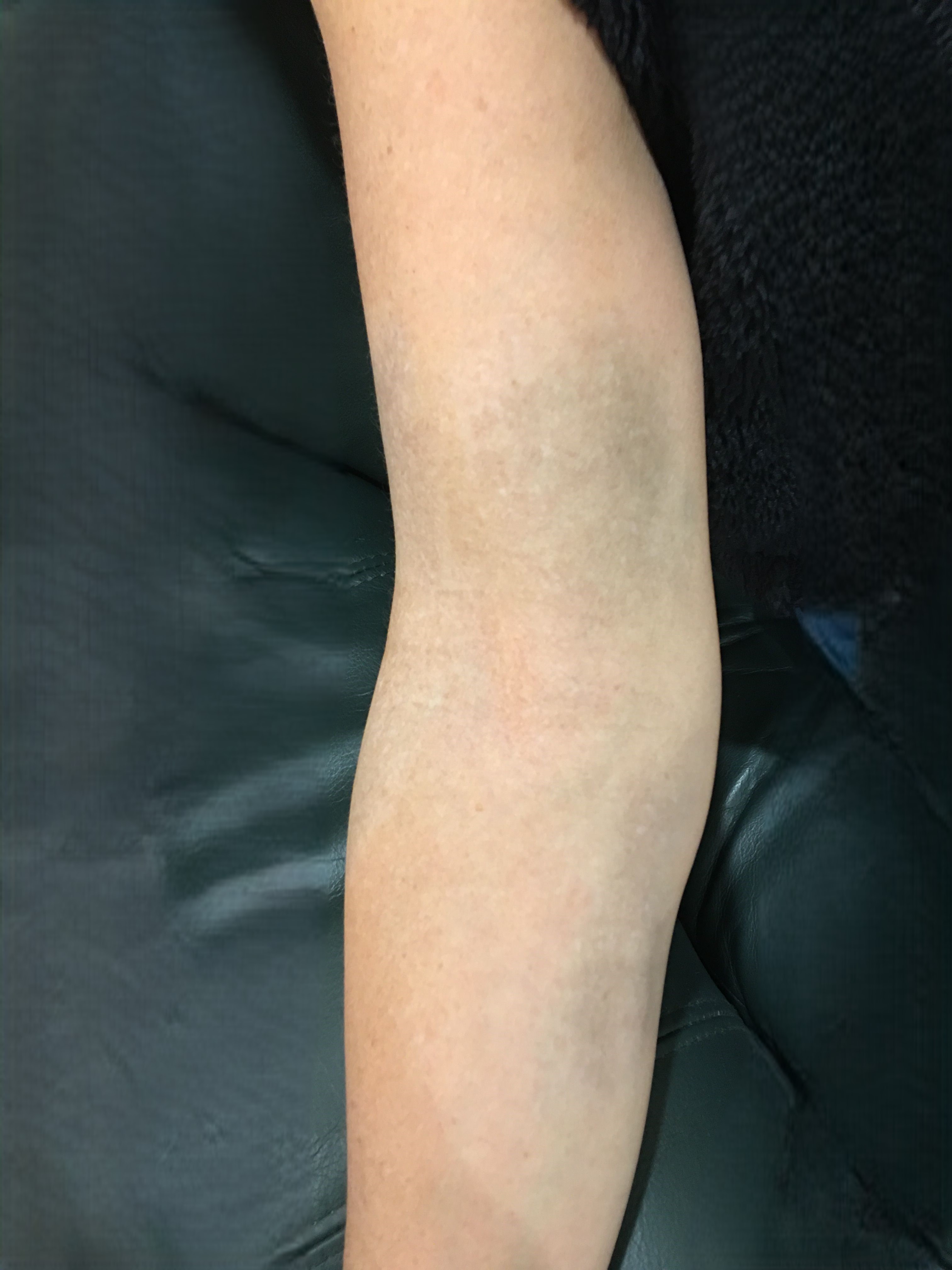
- Do not be misled that iron staining will resolve with time or that there is no effective treatment!
- Best Results when treatment is applied quickly.
- Iron staining can result from infusions, and less frequently, intramuscular injections.
- Picosecond lasers are considered the most effective treatment for iron staining.
- It may take 9 to 20 months for Picosecond lasers to show noticeable improvements.
- Treatments are typically scheduled 6 to 8 weeks apart.
- Satisfactory results often require four to ten Picosecond laser treatment sessions.






The most effective treatment for iron infusion stains is picosecond lasers, which can speed up the removal of iron salts from the skin by altering their size and molecular properties. This makes it easier for the immune system to clear the iron, resulting in faster removal of the staining.

The picosecond laser is widely considered the best option for removing iron stains. This type of laser emits ultra-short pulses that can effectively shatter pigment, including iron stains. Nanosecond lasers, such as RevLite, are not as efficient as picosecond lasers for removing iron stains.

The time required to remove iron staining can vary significantly, usually ranging from 9 to 20+ months, depending on factors such as the patient's immune system, the location and density of iron staining, skin color, total surface area, and the laser system used, as well as the settings applied. On average, between 4 to 10 treatment sessions are needed to produce noticeable results. However, a single treatment session is usually insufficient to remove iron staining significantly. It's worth noting that not all cases of iron staining can be successfully treated, and some cases may result in permanent staining.

Laser treatment for iron staining is well-tolerated by patients. Before the procedure, cooling devices and, in most cases, topical numbing cream is used to minimise discomfort. The duration of the treatment can vary depending on the extent, density, and location of the iron staining.
On average, the procedure takes between 10 to 30 minutes to complete, though this may vary based on the specific case.

The most crucial factor that determines the success and speed of clearance is the patient's immune system. Lasers help optimise the molecular presentation of particles to make it easier for the immune system to clear them effectively. The second most important factor is the depth of the pigment. In some cases, the iron may reach the fat layer, making it difficult to reach and clear even with the most powerful lasers.

Unfortunately, we cannot provide a guarantee that lasers will remove iron staining, unlike other laser treatments such as laser resurfacing or vascular laser. While we use the best and most advanced laser systems available, such as Picoway and employ high energy, short pulse duration 1064 Nd:YAG lasers in both full beam and fractional modes, laser treatment of iron staining is not always predictable. The success and speed of resolution depend heavily on the patient's immune system, and we cannot guarantee a specific result. However, we will do everything possible to help speed up resolution and provide the best treatment available.

In addition to individual immune responses, several other factors can impact the speed of iron infusion clearance, including the extent of the staining (larger areas responding slower than small ones), the location of the staining (lower arm staining responding slower), the density of iron particles (darker iron stains take longer), patient skin type (darker skin may require more sessions), and the type of laser used (with Picosecond lasers being the most effective).

The reasons for this phenomenon are not entirely clear, but it's theoretically possible that the macrophages or cells responsible for clearing up pigment view iron as cytotoxic, which means that the immune system tends to avoid it to avoid cell death. With repeated laser treatments, the biochemical structure of iron residue may change, allowing for more clearance over time. However, the exact mechanism behind this process is not yet fully understood, unlike the removal of other heavy metals where the optical properties of silver have been proven through electron microscopy.

The cause of skin staining can be complex and depend on various factors. In most cases, patients will qualify for ACC cover. If you would like to know more about the process, please get in touch with our team for more information.

Unfortunately, creams are not effective in treating iron staining. This is because the iron is located in the deeper layers of the skin, beyond the reach of any creams or even super-strong chemical peels. Therefore, laser treatment is the most effective option for addressing iron staining.

Iron staining or infusion accidents are most frequently observed on the arms, specifically around the elbow joint. Extravasation primarily affects the upper arm, elbow area, and forearm. The most common cause of this is flexion of the elbow, which can dislodge the cannula. Infusion staining of the legs and buttocks is less common, as intramuscular iron infusions are rarely performed.

The amount of iron in the skin is a crucial factor in how quickly iron staining improves, much like the removal of ink tattoos from the skin.
The higher the density of iron in the affected area, the slower the clearance process becomes. If an infusion accident is not detected early, there is a higher likelihood that a significant amount of iron will have been deposited in the tissue. This results in a longer time taken for the staining to fade and may require more treatment sessions to achieve satisfactory results.

We suggest booking a consultation with our laser nurses, who have extensive experience in managing iron staining. Before scheduling your appointment, please ensure that you have already seen your GP and received an ACC claim number. You can find more information on our "ACC Accidents" page. Once you have your ACC claim number, please complete the pre-appointment form available on our website.
During the consultation, our nurses will examine and document your stains and discuss treatment options with you. Following this, our dermatologist will apply to ACC for your treatments.

Answer: Iron infusion staining is quite common, with our practices seeing approximately 60 cases every year. Roughly half of these cases come from public or private hospitals, while the other half are from the community. This incidence is increasing every year due to the rising number of people receiving iron infusions.

Due to the significant rise in iron infusions and the resulting skin staining, steps should be taken to minimize the occurrence. This may include:
For all appointment enquiries, medical referrals and urgent enquiries please contact us at info@scarsandlasers.co.nz or (09) 524 5011.
